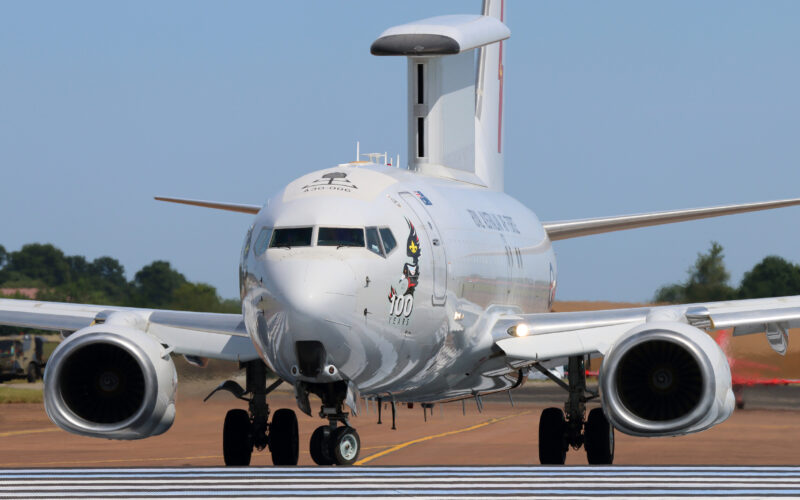The British House of Commons Defence Committee has released a scathing report on the UK’s defense procurement system, notably on the troubled acquisition of the E-7 Wedgetail Airborne Early Warning and Control (AEWC) platform, produced by Boeing.
The committee’s report, titled “It is broke — and it’s time to fix it,” highlights significant flaws and calls for an urgent reform of the procurement system, using the Wedgetail program as one of the case studies.
The troubled acquisition of the UK’s E-7 Wedgetail
The UK Ministry of Defence (MoD) signed a contract in March 2019 to purchase five E-7 Wedgetails, which were already in service with the Royal Australian Air Force and had been deployed in operations in Iraq and Syria. The aircraft’s proven capability and its potential future procurement by the US Air Force made it an attractive choice for the UK to replace its fleet of six E-3D Sentry aircraft.
The UK’s initial order, however, was reduced to three E-7s in the Defence Command Paper of 2021. The report indicates that the reduction was likely driven by cost considerations, with the original order of five E-7s estimated to cost £2.1 billion.
Yet, as per the initial contract, the MoD was obligated to buy five associated Northrop Multi-role Electronically Scanned Array (MESA) airborne radars, which accounts for the majority of the cost.
In comparison, the airframes are second-hand Boeing 737NG airliners acquired from commercial airlines based in China and Hong Kong, to be converted by STS Aviation Group. The bulk of savings were expected to come from cuts in infrastructure and support needs, as explained by Air Chief Marshal Sir Richard Knighton in a previous hearing with the committee. But according to the report, the fleet of three E-7s will still ultimately cost £1.89 billion.
“Even basic arithmetic would suggest that ordering three E-7s rather than five (at some 90% of the original acquisition cost) represents extremely poor value for money,” the report reads.
A concerning capacity gap
Moreover, the Initial Operational Capability (IOC) for the E-7 Wedgetail, initially scheduled for 2023, was postponed to 2024. The delay in the aircraft delivery was attributed by Boeing to supply chain disruptions caused by the COVID-19 pandemic and related workforce issues. However, the IOC could be delayed even further as the full business case (FBC), which includes final details such as the in-service support contract, is still being negotiated with the manufacturer.
The committee emphasizes that the delayed acquisition of the E-7 Wedgetail exacerbates an existing capability gap. The Boeing E-3 Sentry AWACS aircraft, which the E-7 is meant to replace, was withdrawn from service in 2021. This has created a significant vulnerability, particularly in light of ongoing conflicts like the war in Ukraine.
“This makes the reduction in planned airframes from five to three appear an even greater false economy, indeed an absolute folly, not just in financial but also in operational terms as well,” the report concludes.
On July 10, 2023, the Australian government committed to deploying an E-7A Wedgetail aircraft to protect the delivery of military and humanitarian assets into Ukraine through Poland and other neighboring countries.

